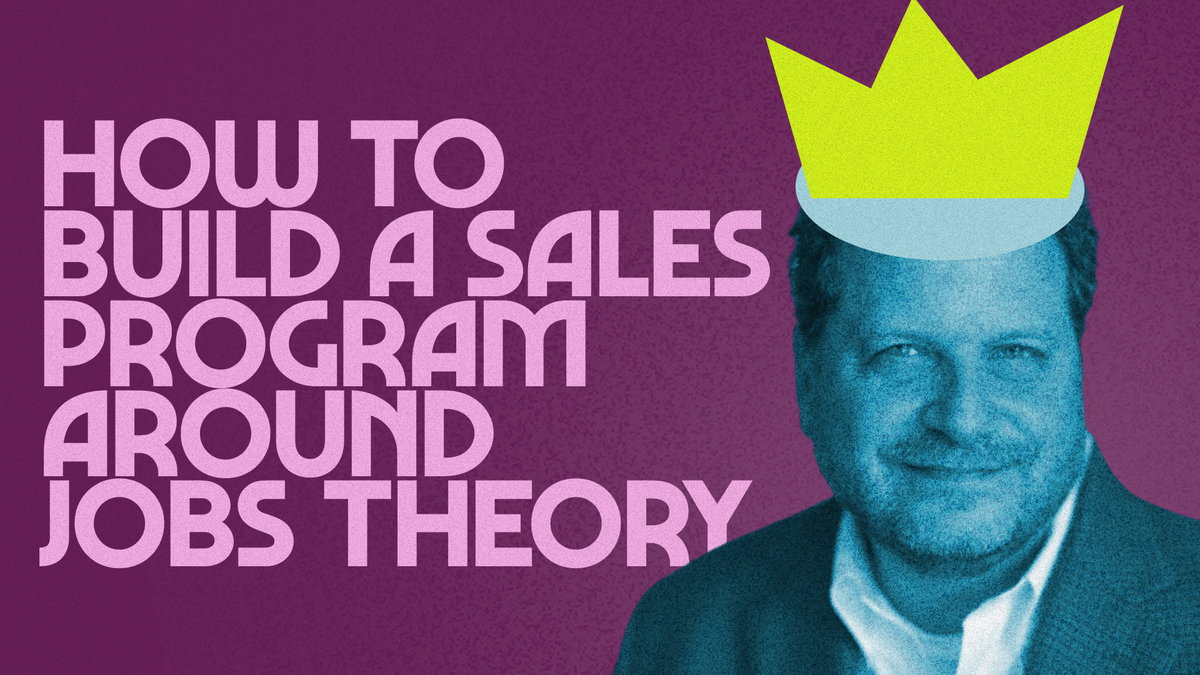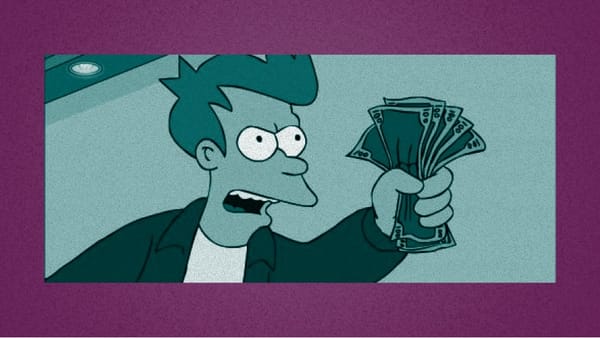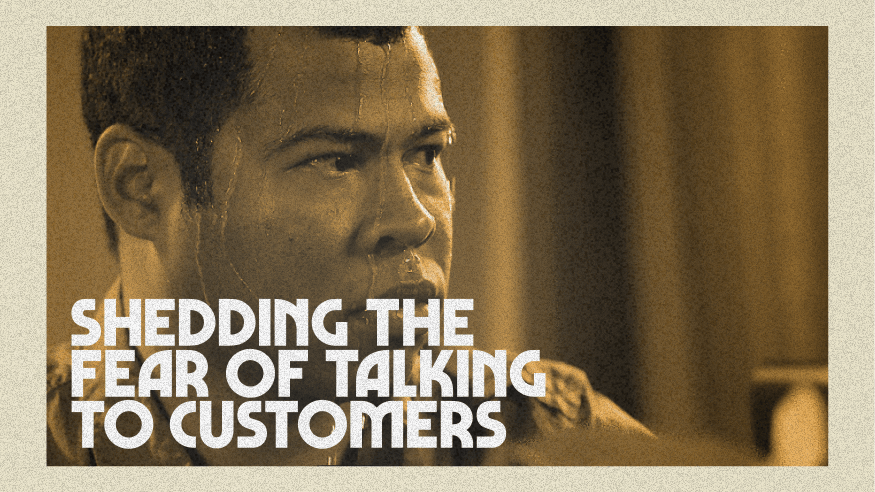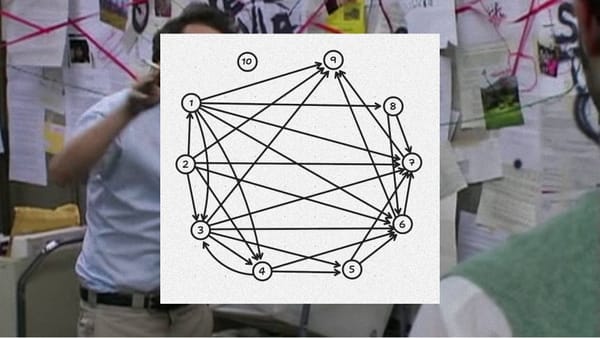Notes on Demand Side Sales

"People convince themselves, we convince them of nothing"
Jobs to Be Done (JTBD) is a theory of how people buy. Demand-side sales is a method popularized by Bob Moesta for building a sales program around JTBD.
Understanding consumers at a deep and empathetic level adds value to the sales approach than focusing only on your product and its features and benefits.

These are some core ideas from the Demand Sides Sales Book that will help you to start selling from the demand perspective and help your customers make progress.
If you like these ideas, please consider purchasing the book!
Demand is about a fundamental struggle
Supply and demand are two different perspectives in sales.
When you're getting a restful eight hours of sleep every night, you don't notice the mattress store when you walk past it. But if you find yourself choosing the recliner every night over tossing and turning in your bed, then you begin to look at and see other options.
When something's not working the struggling moment occurs.

Eliminating the struggle is not progress.
Customers overcoming the struggle is progress. This means to not remove the problem but to overcome it.
The key to understanding causation is found in the circumstance and determined by where you start compared to where you end.
Their circumstances are a reference point for their progress, without understanding their starting place you cannot design their progress.
There's three types of motivation for people to make progress.
Think of it as energy that makes the buying process happen.
Functional Motivation
- How cumbersome is the purchasing process for the buyer - time, effort and speed-wise?
- There's a functional barrier that stands in the way of making a purchasing decision. We need to reduce this functional barrier because it's pushing people away from our services.
Emotional Motivation
- What are the positive and negative emotions that are driving the customers purchase?
- Fears, frustrations and desires?
Social Motivation
- How do other people perceive, respect, trust or acknowledge the customer?
- How proud would their family and friends be. And, as a result, how proud would they feel about themselves.
The four forces of progress
The forces determine whether people can move from A to B and make progress.

(F1) The push of the situation
- The struggling moment for a person to buy a mattress is the requirement for a good nights sleep. Tossing and turning is affecting their productivity throughout the day.
(F2) The magnetism of the new solution
- The moment you realise that something might bring you a better night's sleep and help you make progress. The solution creates magnetism and you start to imagine a better life with a good night's sleep.
- For example, a friend talks about a new mattress they bought and raves about it. This is a pull towards a new solution.
(F3) The anxiety of the new solution
- Despite the problem and the pull of the new solution, there's anxiety.
- Making the leap from one solution to another will raise anxieties as to whether the new solution will bring about positive change (will the new mattress delivers on its promise?)
(F4) The habit of the present
- You are used to the old mattress even though it sucks. You've learned to live with it. There's an energy in that incumbent solution that keeps you from making the progress and stops you from switching.
By seeing the world in this new light "buying" becomes a system.
- (F1 + F2) > (F3 + F4)
- The forces work as a system and sometimes, adding more features is not better because it causes additional anxiety.
Note: money is made on the anxiety side of the equation.
Reducing anxieties around the solution gets them to what you're selling faster. If you can figure out what's holding people back, you can shortcut the sales process and increase profits.
The purchasing timeline
Whether you're buying a pen or a cup of coffee, buyers have to go through certain stages in order to make the purchase happen. Over the years, Bob's team has uncovered six stages.

When you understand where people are in the timeline it can help position the product or service with the ideal market. Also, knowing your customer's stage in the timeline helps them move forward at their pace.

1. First thought
"I have a problem"
This is about helping customers create space in their brain about a problem they're having and admitting to it.
By having a deep understanding of the customers struggling moment and where they have them you can create a space for a problem, for which, a solution may fall into place.
Creating a first thought means that customers see things in a new way.
There are four ways to create the first thought:
- Ask a good question and not give an answer
- Tell a story
- Give a new metric
- State the obvious
2. Passive looking
"Maybe I can do something"
Passive looking is about learning about the problem.
There's a little transition going from the first thought to passively looking.
At this stage, it's about making your products/services repeatedly visible to the customer. Especially in places where they feel the struggle. This is where marketing and advertising become useful.
When they're exploring possible solutions to their problem and you help them connect the dots between the question in their brain (first thought) and your solution.
By showing up at the right spot you grow their social and emotional energy around the problem.
3. Active Looking
"I need to do something!"
Active looking is like exploring the solution.
Going from passive looking to active looking is almost instantaneous.
Once we've made space for the problem they start narrowing down on solutions.
Then they go into having a time wall to decide on one solution to "hire".
This is where people plan or spend time and even money figuring out what's next, the solution to their struggling moment. These options help people create an ideal solution in their mind.
It's important that the buyer has contrast; without contrast, it becomes impossible to decide.
In the active looking phase, buyers need a time wall. Like an artificial deadline or a time box to move to the next phase of the timeline.
If there's no time wall people might take forever to make a choice. The moment a time wall is present, they make a choice.
It's important not to overdo it however because you might lose urgency.
4. Deciding
"What's important and what's not? What do I care about?"
Deciding involves making the trade-offs and establishing value.
People need something to reject before they can buy something else. Creating reference points is a form of elimination.
In sales, the definition of making a tradeoff is about choosing the best way to make progress as opposed to compromising.
For e.g., people want thick crust pizza or thin crust pizza. If you averaged those results you'd get medium-thick-crust pizza. Nobody wants that.
The expectations for satisfaction are cemented while they decide, and value is defined
The customer's understanding of quality, performance, and satisfaction starts here, and everything in the future is measured based on final expectation locked while they are deciding.
In the deciding phase, buyers factor in bigger discounts.
The discount is more emotional and social than financial motivation. Customers want to feel good about themselves about getting a discount.
5. Onboarding
"Were my expectations met?"
Onboarding is where the consumer is having the first use of the product or service and measuring it against the expectations they set when deciding to hire the solution.
It's about being able to onboard them while delivering in a way that matches the expectations they set.
You want the customer to not only feel satisfied but excited and delighted about something they didn't know they'd want or get.
Most people stop selling once the purchase is made. But progress is about making sure that you deliver on the expectations set.
Dissatisfying a customer comes because of a lack of communication and it's worth hearing about to improve future versions of the product.
6. Ongoing Use
"Am I building a habit with this product?"
There's a difference between buying (onboarding) a product or service and using it every day.
If you did not set expectations well, the consumer will have a new struggling moment, which over time can lead to another big hire from a different solution.
So, this phase is about turning the first use experience from onboarding to ongoing use or building the habit of using the product.
Moreover, ongoing use is about understanding the different struggling moments (which might cause people to fire you) and making the product/service better.
You as a salesperson has to meet the buyer in each of the six stages.
Your goal is to create an input at each of the six stages that trigger the desired output, which ultimately leads to an ideal outcome for the customer.
A lot of the time, sales feels icky.
It's icky because you might not believe that the product will help the customer make progress.
I like JTBD theory and Demand Side Selling because it takes an honest and empathetic approach to helping customers get to where they need to be. If you're failing to do so, it'll help you understand why.
In my copy of demand side selling, there isn't a page that isn't underlined or a margin that's left without ink. I highly recommend you add it to your library if you're a creator!
Interested in learning about how this can be applied to product development? Check out:







